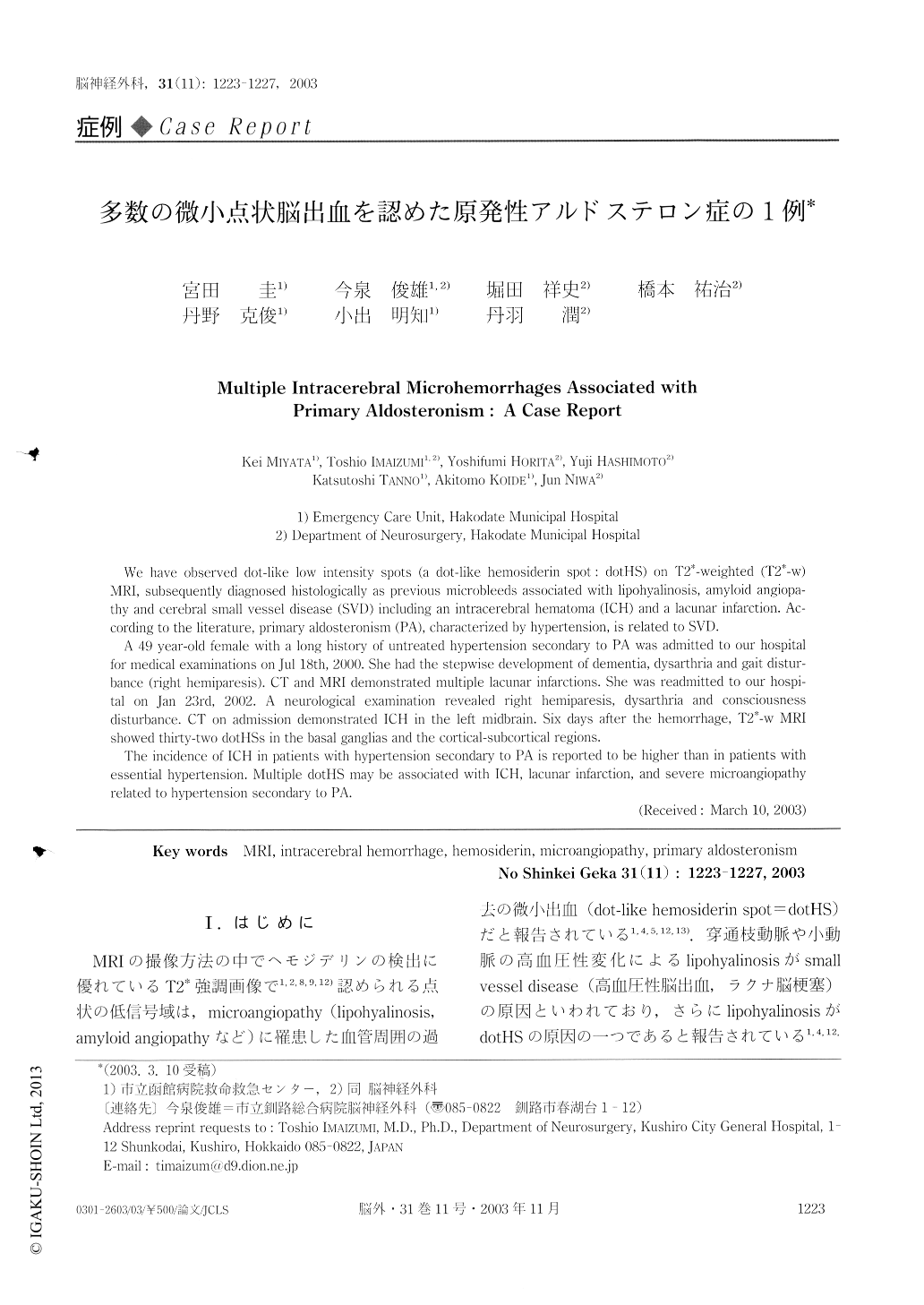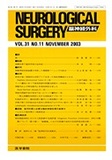Japanese
English
- 有料閲覧
- Abstract 文献概要
- 1ページ目 Look Inside
Ⅰ.はじめに
MRIの撮像方法の中でヘモジデリンの検出に優れているT2*強調画像で1,2,8,9,12)認められる点状の低信号域は,microangiopathy(lipohyalinosis,amyloid angiopathyなど)に罹患した血管周囲の過去の微小出血(dot-like hemosiderin spot=dotHS)だと報告されている1,4,5,12,13).穿通枝動脈や小動脈の高血圧性変化によるlipohyalinosisがsmallvessel disease(高血圧性脳出血,ラクナ脳梗塞)の原因といわれており,さらにlipohyalinosisがdotHSの原因の一つであると報告されている1,4,12,13).dotHSが多いラクナ梗塞例では,脳出血合併例が多く7),また,dotHSが認められる症例では脳梗塞急性期に脳出血合併が多く11,16),dotHSは脳血管の脆弱性を表し,さらにdotHSの数は間接的にmicroangiopathyの重篤度(特に脳出血との関連)を表す可能性がある7).
原発性アルドステロン症(primary aldosteronism=PA)は,副腎腫瘍などで起こるアルドステロン過剰状態による二次性高血圧症の一病型である10,14,15,17,19).
We have observed dot-like low intensity spots (a dot-like hemosiderin spot : dotHS) on T2*-weighted (T2*-w) MRI, subsequently diagnosed histologically as previous microbleeds associated with lipohyalinosis, amyloid angiopa-thy and cerebral small vessel disease (SVD) including an intracerebral hematoma (ICH) and a lacunar infarction. Ac-cording to the literature, primary aldosteronism (PA), characterized by hypertension, is related to SVD.
A 49 year-old female with a long history of untreated hypertension secondary to PA was admitted to our hospital for medical examinations on Jul 18th, 2000.

Copyright © 2003, Igaku-Shoin Ltd. All rights reserved.


